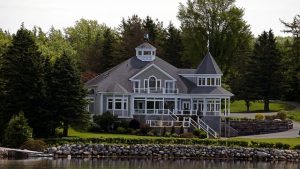Living by the coast has undeniable allure—stunning ocean views, the sound of waves, and the refreshing sea breeze. However, the same elements that make coastal living so desirable can also present unique challenges for homeowners. Understanding how the coastal atmosphere affects your home is crucial for maintaining its beauty and integrity over time.
challenges for homeowners. Understanding how the coastal atmosphere affects your home is crucial for maintaining its beauty and integrity over time.
One of the primary concerns for coastal homes is the salt-laden air. Salt can be incredibly corrosive, especially to metal surfaces. This means that anything from your home’s structural reinforcements to outdoor furniture and railings can suffer from accelerated rusting and deterioration. Regular maintenance, such as rinsing metal surfaces with fresh water and using rust-resistant materials, can help mitigate this issue.
The moisture content in coastal air is another factor that can significantly impact your home. High humidity levels can lead to issues like mold and mildew, which not only damage the structure of your home but also pose health risks. Ensuring proper ventilation is key to combating this problem. Installing dehumidifiers, using mold-resistant materials, and frequently inspecting areas prone to moisture accumulation—such as basements, attics, and bathrooms—can help keep these issues at bay.
Another aspect to consider is the impact of strong coastal winds. Over time, these winds can cause wear and tear on your home’s exterior, especially the roof and siding. Shingles can become loose or damaged, and paint can peel faster due to constant exposure. Investing in high-quality, weather-resistant materials for your home’s exterior can provide better protection against the elements. Regular inspections and timely repairs are also essential to prevent minor issues from becoming major problems.
Salt air and moisture can also affect wooden structures, leading to rot and decay. This is particularly concerning for homes with wooden decks, porches, or any wooden architectural elements. Applying sealants and finishes designed for marine environments can extend the life of these features and protect against harsh coastal conditions.
Lastly, living by the coast often means being prepared for extreme weather events such as hurricanes and tropical storms. Ensuring that your home is built to withstand these forces, with reinforced windows, storm shutters, and a solid foundation, can make a significant difference in the longevity and safety of your property.
In conclusion, while coastal living offers many joys, it’s essential to stay vigilant and proactive in maintaining your home. Regular maintenance, using appropriate materials, and being prepared for the unique challenges of the coastal environment can help ensure that your home remains a beautiful and safe haven for years to come.








